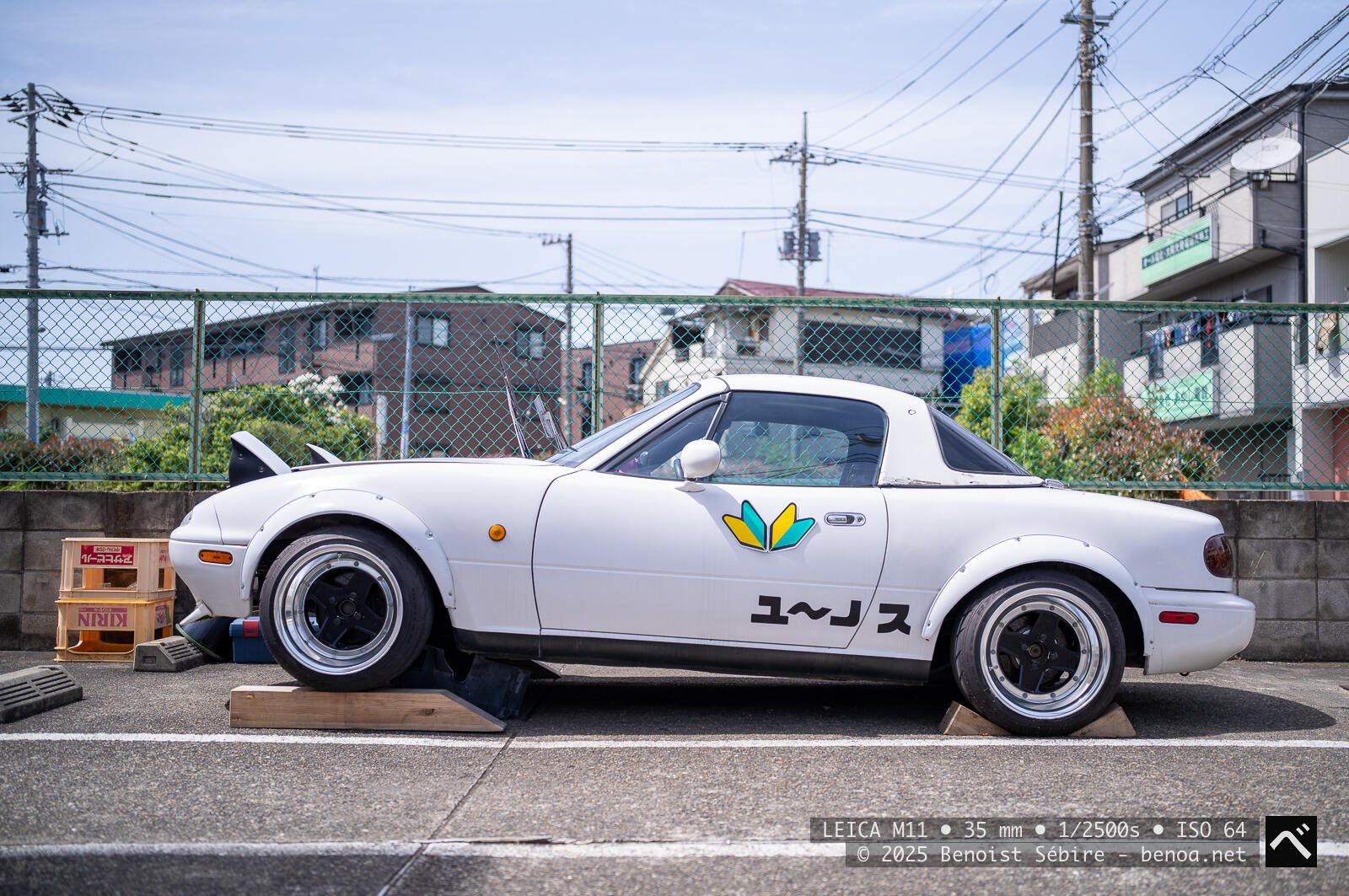Japanese Drift Car

Spotted in a quiet Japanese neighborhood, this white Mazda MX-5 Miata stands out not just for its clean lines and compact stance, but for its clear nod to car culture. Sporting bolt-on overfenders, deep-dish wheels, and a quirky decal on the door featuring the Japanese “wakaba” mark (a symbol for beginner drivers). The katakana text reads “ユ〜ノス” (Yūnosu), referencing the car’s original branding in Japan as the Eunos Roadster.
The car’s positioning—propped up on ramps, hood slightly open—hints at a hands-on owner, likely deep into tuning or maintenance. This isn’t unusual in Japan, where automotive subculture often blends seamlessly into everyday life, especially among drift enthusiasts.
Though many in the West were introduced to drifting through Fast & Furious: Tokyo Drift, the roots of this sideways-driving art run much deeper. Japan is the birthplace of drifting as a motorsport, going back to the 1970s and ’80s. Street racers and “touge” (mountain pass) warriors would push the limits of control on winding roads, developing techniques to maintain speed through sharp curves—sideways.
Drifting took shape as a proper motorsport thanks to drivers like Kunimitsu Takahashi and Keiichi Tsuchiya, the latter known as the “Drift King.” Tsuchiya’s street racing background and revolutionary use of drifting in circuit racing turned what was once a style choice into a discipline.
In Japan, drifting became more than a motorsport—it evolved into a culture. Circuits like Ebisu and Nikko became legendary, and entire towns would light up on the weekends with the echo of rev-limited engines and tires screaming sideways.
This little Miata you see? It’s part of that lineage. Lightweight, rear-wheel drive, and with an engine that loves to be thrashed—cars like this are perfect for learning the ropes of drift. Whether it’s practicing on back roads or lining up at a local drift day, it’s likely this machine’s seen its fair share of sideways action.